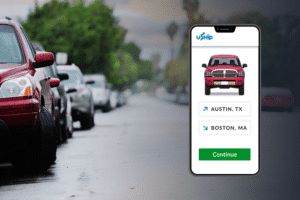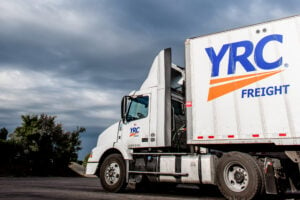The Obama administration has made headlines for its continued use of unmanned aerial vehicles in the Middle East, but the robotic flying machines may be making their way into consumer-based industries sooner than later.
A recent 60 Minutes report found that Amazon’s Chief Executive, Jeff Bezos, has commissioned a project to explore the use of drone delivery systems in an effort to keep pace with fluid market demands. The aptly named “octocopter” drones are part of a well-funded research and development project that hopes to deliver customers’ packages within one half-hour of them ordering, CBS News said. Consumers, now used to the seamless experience of online retail, expect their products faster than ever before. Pending FAA approvals, Bezos’s “Prime Air” may be available within four to five years.
The experimental use of drone technology is spilling over into other industries, as well. Believe it or not, unmanned vehicles may make their way into the transportation industry. Although it sounds somewhat contradictory, robotic means of travel and shipment are being developed by market leaders in hopes of reducing costs and creating convenience for all parties involved.
Drones may penetrate multiple markets
Unmanned vehicle technology has been in development for nearly 40 years, but it hadn’t been effectively utilized until the turn of the century. Aerospace engineer Abraham E. Karem revolutionized the technology when he emigrated from Israel in the late 1970s after he created a low cost, yet highly productive drone model, The Economist said. After working in the private sector for years, the machinery was adopted by the U.S. government for military purposes.
After many years of operation within the armed forces, drone technology is leaking into civil aviation – minus the missiles, of course. Drone advancements in the transportation industry are wide-sweeping, and recent research from Michigan Tech University is looking into the possible use of drones for mapping out unpaved roads, understanding traffic jams and evaluating the conditions inside culverts, according to its website. The objective is to find a high-efficiency, low-cost method of aiding transportation agencies in cartography, as well as providing consumers with more real-time traffic information.
In this instance, the use of drones makes perfect sense in that aerial robotics can not only save time and money, but reduce the risks for employees on potentially hazardous job sites. Unmanned vehicles are in embryonic stages elsewhere, including the seafaring freight ships that move millions of pounds of cargo on an annual basis. A recent Bloomberg report found that the nautical division of famous automotive manufacturer Rolls Royce is experimenting with unmanned cargo ships and has the European Union backing the project. Prototypes are in development at the moment and may be regionally deployed within the decade, although fervent union backlash and industry regulations could significantly slow global adoption, Bloomberg added. Rolls Royce’s Blue Ocean team is adamant that the unmanned ships would severely lower costs and be safer for those involved within the cargo ship ecosystem – an industry that holds 90 percent of the world’s trade.
Game of drones
The seafaring robotic ships would still have to be controlled by an offshore captain, and unloading and docking would essentially remain the same. While this technology may seem cutting-edge, Google felt the need to one-up the competition – like it always does. The California-based tech giants recently released video footage on its corporate blog about a robotic car that literally drives itself. Based on highly intelligent software and a large number of sensors throughout the vehicle, the prototype machine doesn’t even have a steering wheel, accelerator or brake pedal.
The aim is to eliminate distracted, drunk and unsafe driving altogether, Google said. They’ve been designed to operate safely and without human interaction, although one may argue that a simple malfunction could lead to larger issues on the road. Nevertheless, Google hopes to increase road safety for consumers through a number of features, including sensors that eliminate blind spots and can detect things more than 200 yards away in every direction. The first prototype model has a blazing top speed of just 25 miles per hour, but the tech giant hopes to build off of this project going forward, as the car is still in its experimental stages.
Wal-Mart has similar plans to tap into the driver-less car market. The Arkansas-based retail mogul recently unveiled its plans for a futuristic fleet of semi trucks, which look as if they were plucked straight from Michael Bay’s “Transformers.” A new carbon-fiber trailer design is said to make the prototype 4,000 lbs. lighter than the retailer’s existing trucks, and its in-cabin screens give drivers the chance to monitor truck performance in real time, Fox Business News reported.
Similar to Google’s driverless car, the freight industry is looking at engineering vehicles that are completely autonomous. Fleets of trucks would no longer need large staffs of drivers; rather, semis would virtually react to one another, braking and accelerating in unison. The possibility of a cohesive fleet of trucks could save fuel, improve safety and reduce road construction in a significant manner. Over the past decade, stricter federal fuel regulations have led to optimized efficiency among industry fleets, and the new research suggests gasoline cost savings could increase significantly with self-governing trucks.
Road safety is a concern among skeptics, but officials have been quick to point out that eliminating the human element of semi driving would lead to a more secure highway system as drones’ reaction time is faster than a typical person’s reflexes, Fox Business News added.
A large portion of drone technology is still in premature development, but its civil impact could be massive – especially in the transportation industry. Not only are companies developing safer, more ergonomic vehicles for consumers to travel in, but businesses are also researching ways to make shipping and transportation cheaper and less risky. Drones have the ability to create a streamlined way for patrons to receive products and are moving closer to integration into everyday culture.



